-
Gesamte Inhalte
37 -
Benutzer seit
-
Letzter Besuch
Inhaltstyp
Profile
Forum
Kalender
Shop
Articles
Community Map
Alle Inhalte von GiulioEX125E
-
Es ist wirklich schön, herzlichen Glückwunsch Ich habe Lust, ein ähnliches Projekt auf meiner Vespa zu starten
-
Ist es möglich, ein komplettes Fotoset dieser Vespa zu haben? sie ist wirklich schön. Ich spreche nicht gut Deutsch, sorry, aber die Vespenliebe kennt keine Sprache
-
[Entschuldigung für mein Deutsch, ich benutze Google Translate] Ich versuche, ein HP-Schwungrad an einen PX-Motor anzubauen. Die Statorplatte habe ich bereits gedreht, damit ich den richtigen Zündzeitpunkt habe, ich habe es mit der Stroboskoppistole überprüft und es ist ok. Aber: Es dreht nicht über 6.000 U / min. Es stottert wie wenn der Tonabnehmer stirbt. Ich habe gelesen, dass dies durch eine schlechte Ausrichtung des Pickups mit dem Schwungrad verursacht wird, also habe ich versucht, verschiedene Unterlegscheiben als Abstandshalter hinter der Statorplatte zu verwenden. Ich habe 1/1.5/2/2.5/3 mm ausprobiert, aber nichts hat das Problem behoben. Die Person, die mir das HP-Schwungrad verkauft hat, sagte, "es funktionierte gut an meinem Motor" (keine PX-Engine). Keine Ahnung ob das stimmt oder nicht Der Stator und der Tonabnehmer funktionieren einwandfrei, da sie mit den PX-Schwungrädern keine Probleme haben und bis zu 10-11.000 U / min drehen. Ich habe sie auch mit dem Tester überprüft, und die Werte sind alle gut. Haben Sie eine Ahnung, warum das passiert?
-

VMC Stelvio 187 schlechte Leistungen nur mit BGM BBS
GiulioEX125E antwortete auf GiulioEX125E's Thema in Vespa PX, T5, Cosa etc.
Die Frage war: Warum schneidet das BBS bei dieser Motorkonfiguration so schlecht ab? Für mich ist es ein gutes Setup für eine BBS, es hat keine niedrigen Timings wie 110-160° oder ähnliches, aber es hat auch nichts zu hohes wie 135-198° und so weiter... Das könnte stimmen, ehrlich gesagt habe ich das auch schon gehört. Naja kommt drauf an. Ich habe auch eine Modifikation an der Faco-Box vorgenommen und es lief wirklich gut, sogar über meinen Erwartungen. Die Modifikation, die ich am BBS vorgenommen habe, ist keine Idee von mir, aber White One Racing (italienische Tuner, ziemlich aktiv auf Youtube, vielleicht haben Sie schon davon gehört); Sie testeten die Modifikation mit großartigem Ergebnis, zuerst an einem getunten 200er-Motor (210 oder 221, ich erinnere mich nicht), dann an einem getunten 187er-Motor. Deshalb habe ich ihre Anleitung zum Ändern des BBS befolgt. Aber in meinem Fall hat es nichts gebracht, oder vielleicht +1 hp wie gesagt. Selbst ohne Berücksichtigung der Modifikation, die ich an der BBS vorgenommen habe, funktioniert sie meiner Meinung nach immer noch ziemlich schlecht. Und ich verstehe nicht warum. -
If someone wants to give me some help with the BGM BBS in this topic... I don't know why it is performing so poorly while all the other exhausts I tried are doing quite good...
-
Ich spiele mit einem VMC Stelvio 187 herum. Dies ist das komplette Setup: - Zylindersteuerzeiten 125-185°, Auslassbreite 69% - Squish: 1,0, Kompressionsverhältnis: 12,75 - DRT Drehschieber Kurbelwelle 60x110 - LML-Membrangehäuse stark verschweißt und im Ansaugbereich gefräst (riesiger Durchgang) - PHBH 28 mit vforce4-Stimmzungen - Pinasco 1,6 kg Schwungrad, Ducati statische Zündung um 20° - 22/68 Primär, 16/19 Cluster, 4. Gang z35 Ich habe diesen Motor mit verschiedenen Auspuff ausprobiert, und er funktioniert mit allem gut, ABER NICHT mit dem BGM BBS! Ich werde hier einige Diagramme mit allen getesteten Auspuffsystemen hinterlassen (Faco-Box ist fast identisch mit der Polini-Box; PX 7 ist Resonanzauspuff, die von einem Freund hergestellt wurden), und Sie können sehen, dass die Leistung von BGM BBS insgesamt ziemlich schlecht ist, insbesondere für die Drehmoment. Außerdem ist das von mir verwendete BBS kein Standard, es wurde modifiziert. Ich fügte eine "Reflexionswand" 4 cm vom letzten Kegel entfernt hinzu, dann entfernte ich die seltsame Wand in der Box und ersetzte sie durch eine Standardwand mit einem einzigen Loch. Zuletzt entfernte ich das 16-mm-Rohr und schweißte ein 18-mm-Rohr. Aber das wurde auf einem vorherigen "Schritt" mit diesem VMC (Standard Low Timings) gemacht und es hat nicht viel gebracht, weniger als +1 hp Was denkst du? [Entschuldigung für mein schlechtes Deutsch ]
-
Here are some tests I did on my VMC Stelvio with reed valve and the BGM BBS. I did a simple comparison between 2 different engine configurations. Step 1: VMC Stelvio 115-170°, exhaust 64%, squish 1.0, CR 11.5 Full circle crank 57x110 LML cases, heavily welded and milled on the intake area to open a big passage PHBH 28 on vforce4 reeds Static Ducati ignition at around 18° 2.1 kg flywheel Step 2: Timings raised to 125-185°, exhaust widened at 69%, squish 1.0, CR 12,75 Cut rotary intake crank, 60x110 The rest was the same as step 1. Here you can see the comparison between the 2: The BGM BBS I used is modified by me, by adding an internal wall at around 4 cm from the last cone; I also removed the small "box" inside the box (:D) and replaced it with a standard wall with one single hole, then the final tube of 18mm internal diameter. This modification showed basically no result on the step 1; on step 2 I only tried the modded version of BBS so I have no idea, sadly. Overall, I am not super satisfied with the BBS... In the step 2, it lost peak torque, it only gained some peak power thanks to the higher revs.. I still have to make some adjustements, for example the final part of the exhaust duct on the cylinder is really small even for the original exhaust port, now that I raised it and widened it, it must be also widened in all the lenght, from the cylinder to the exhaust (hard to explain sorry, I hope you get it). What do you think? Any suggestion? This BBS isn't making me really happy
-

T5 vs PX engine (NOT basic tuning)
GiulioEX125E antwortete auf GiulioEX125E's Thema in Vespa PX, T5, Cosa etc.
Nice, I will surely give it a read! Thanks As far as I know (never had them in my hands), Pinasco T5 cases have more material on the cluster area, which is already a huge upgrade from Piaggio cases. I would prefer reed intake, because I already have everything it needs. Also I have very limited experience in rotary intake, and finding the best timings would be quite a pain... Overall I think this T5 project would cost too much for a small (if any) performance increase from my current PX engine. Piaggio T5 cases cost quite a lot, Pinasco T5 cases even more. There is no garantee that a 172 Malossi would perform better than my current 187 MHR on PX, and the only relevant difference would be the bigger transfer ports. Uhmmmm the more I think of this T5 project, the less smart it sounds -

T5 vs PX engine (NOT basic tuning)
GiulioEX125E antwortete auf GiulioEX125E's Thema in Vespa PX, T5, Cosa etc.
The 251 Pinasco surely is an interesting cylinder, I especially like its huge transfer ports (way bigger than a Quattrini 244 for PX, for example) but I have 2 major doubts on it: 1) 251cc (and all big bore in general) produces a lot of torque, I don't think the original Piaggio T5 cases would last long. It would probably be needed to use Pinasco T5 cases, that are reinforced on the cluster area, where PX and T5 cases usually crack 2) the price of the Pinasco 251 is higher than the Malossi 172, and as stated in n.1, it would also require the reinforced Pinasco T5 cases (in my opinion) so the price would be even higher So you think the 172 Malossi for T5 isn't a good cylinder? If raised to around 130-190°, do you think it has less potential than a 172 M1X / 177 VMC Stelvio / 177 Malossi MHR, for PX? -
Hi everyone! As usual, sorry in advance but I don't speak german so I'm writing in english since most of you can understand it (I hope). So I am here to ask a simple question: considering the same "tuning level", can a T5 engine have the same performance of a PX engine? I can use the example of a PX engine that I built recently: 187 Malossi MHR, 127-190° 28 or 34mm carb, vforce4 reeds on bolted-on MRP block LML cases heavily welded and milled in the intake area to have a big area for the mixture to come in 60x110 Tameni crank Pipedesign Bullet + Megadella XL (used both - not at the same time ) GSF dyno showed something around 27-28hp (the exact value is irrelevant, we all know it can also show 35hp if I change some values...). But even ignoring the hp value, generally speaking I assume we all know how an engine like this can perform, more or like. So I'm curious of what can be achieved with the same level of tuning, but starting with a T5 base. Example: Malossi 172 cylinder (I think it's the only "good" one for T5), timings around 130-190° or something like that bolted-on reed block, no welding 28 or 34mm carb long stroke crank (still no idea which one, its all hypotetical) expansion chamber exhaust or box exhaust (Megadella XL, BGM BBS, something like that - not interested in Polini box, Sip Road etc) Do you think something like that (I know the engine description for the T5 is very generic), can perform as good as the PX engine, with the same level of tuning? More specifically... I'm interested in a T5 project because the T5 engine is the natural evolution of the PX engine, so it has a "stronger" crank, a better bearing for the flywheel side, and last but not the least, it has bigger transfer ports. Regarding transfer ports specifically, I also would like to do something like this, if it is possible: welding the area as in the picture, both on the cases and on the cylinder, to have a bigger surface so that I can mill even bigger transfer ports; this way the would start looking similar to a modern 2stroke engine, where the transfer ports usually are really huge. Original T5 ports are already big, but since this welding and milling work isn't so expensive or complicated to do (I hope!), I would really like to try. So short version: 1) do you think PX and T5 engines with the same tuning level, can achieve the same performances? 2) what do you think about the welding & milling idea for the maxi transfer ports? Thanks in advance :)
-

[High transfer - high exhaust] VS [high transfer - low exhaust]
GiulioEX125E antwortete auf GiulioEX125E's Thema in Vespa PX, T5, Cosa etc.
@AIC PX I couldn't find anything related to my question, in those 2 topics :( You surely tested a lot in terms of cylinder timings, but I didn't find a test where you only lowered the exhaust, keeping the transfers at the same level. You tested blowdown changes but in all the tests, you also changed transfers... -
Hi everyone, first of all excuse me for writing in english, but I don't speak german I have a question about cylinder timings, I would like to discuss it in a "unspecific" way, without mentioning any specific cylinder brand, carb type, exhaust, etc. Let's say I have an engine that has 130-190°. This is the power/torque graph: 31.5 hp @ 8500 rpm 26.1 nm @ 8200 rpm From general knowledge, if I simply lowered both the transfer and the exhaust (let's say 125-185°), the torque band would move to the left, giving me more torque at lower rpm but also less peak power and less over-rev. Now: how would this curve change, if instead I only lowered the exhaust? Let's say, from 130-190°, to 130-180°? How does lowering the exhaust only, affect the curve? If I lower the exhaust only, it probably won't be exactly like I just described for lowering both transfer and exhaust, right? If someone here already experimented this combination (high transfer-low exhaust), feel free to draw on my graph to show how you think the curve would change.
-

Malossi MHR 177 - Die neue Legende
GiulioEX125E antwortete auf MaRi's Thema in Vespa PX, T5, Cosa etc.
Did anyone here maybe measure the tolerances between piston and bore on the MHR? -

Malossi MHR 177 - Die neue Legende
GiulioEX125E antwortete auf MaRi's Thema in Vespa PX, T5, Cosa etc.
I know google translator, but I also know how bad it is. Since most of the people can read english, I think it is better to simply write in english. Also since there is a lot of technical words when talking about tuning, google translator can really fuck it up badly and the whole sentence might become hard to understand. So what kind of improvements did this bring? Higher squish, more retarded ignition and learner carb setup... I feel like this made more power at the overrev? Anyway, I am about to re-install my dear MHR. This time tho, I would like to test the VMC piston on it. Ring-pins fall in the 3rd port for both the cylinders, so no issue. I will use the VMC head to make sure it copies the vmc piston perfectly. VMC piston is about 1mm higher, so I will need to raise the cylinder 1mm to get the right squish and cylinder timings. The last thing that I'm trying to figure out, is the tolerances. I live in a small city and its a PAIN to find someone with the tool to measure. I went to a workshop and they measured the following: cylinder: 62.97 piston: 62.78 That gaves me a tolerance of 19 cent. What the hell? I suspect those values are not precise. Also 62.97 bore... that should not be possible, it should be 63.00 or maybe even something more like 63.03, if the coating is reduced a little bit. Also they guy said that the piston is not a cone anymore, because he got the same measure on 3 different heights of the piston. So... all this makes no sense to me. I tried to find another workshop with the right tools, again it was a real pain, now I found it, I left them the cylinder and piston, but they are full of other jobs to do, it's been 1 week already and no news from them. The situation in my city is so sad... None does this "precision stuff" anymore, it's an art that's already dead, so sad. Anyway: I will wait for news and then I will see if it is possible to use a VMC piston on the MHR. I'm not sure it will bring benefits of course, but I think it's worth trying. -

Malossi MHR 177 - Die neue Legende
GiulioEX125E antwortete auf MaRi's Thema in Vespa PX, T5, Cosa etc.
Well... VRONE cases surely are nice, with a good intake even if not optimal (ooptimal = bfa intake style, carb pointing backward and reeds pointing forward). Vespower ignition, I dont know, 1.2kg flywheel sounds a little bit too light, considering the lightest largeframe clutches weight around 1kg (Crimaz) or 1.3kg (Sip or standard Piaggio) so its 1-1.3kg on the clutch vs 1.2kg on the flywheel... I dont like that. Anyway, my MHR with stock timings, on LML cases with the intake opened up and a fullcircle crank, with a phbh28 on vforce4 reeds and various box and resonance exhausts, pulled around 21-23 hp and 20-23 nm. Did you get better results with your setup? Did you dyno it already? -
Ok so nothing good came out of my attempt to modify the BBS as described by W1R. Initially I used a short outlet pipe of 20mm, but as I said, since the hole in the internal wall was on the right side, that caused the hole to be too close to the outlet pipe, and this caused a bad behaviour by the exhaust, maybe the gases were flowing out too fast, causing a low internal pressure. Anyway, I removed the short 20mm outlet pipe and I used a long 18mm pipe, which goes inside the box for 8-10cm, going all the way to the left side. This made the exhaust perform a little better, but still, the overall difference between stock BBS and modded BBS, is really really low, less than 1hp and 0,5nm. Also the gain is only after the power peak, so only in the overrev area. W1R showed a great gain (around 3hp) in the WHOLE rpm range, their test was done on a 187cc Parmakit engine with higher timings, don't know exactly but around 125-185° or something like that. That might be the only explanatin of why my modification on the BBS didn't show any result, maybe my VMC has too low timings to show any difference, with the stock 115-170° timings. That's the only thing that cames to my mind, even tho I must say that it doesn't sound very logical. I will now proceed to test the modded BBS on my other engine, 177 MHR with high timings, around 126-191° or 130-195°, actually I will maybe try both the combinations. But still, even if with the higher MHR timings the BBS works better, I will never know if there would be a difference between original and modded
-

Malossi MHR 177 - Die neue Legende
GiulioEX125E antwortete auf MaRi's Thema in Vespa PX, T5, Cosa etc.
I figured out in my long ass post, I didn't post a comparison between step 1 and step 2 of the MHR. While reading all the 35 pages of this topic about MHR, I've read that a lot of people are quite dissapointed with the cylinder, because it doesn't pull out the expected power. But I think of it in a different way... Most of the setups I've seen in those 35 pages are soft-tuned, some have rotary intake, some have low cyl timings under 125-185°, and NO ONE has a widen exhaust port. We're talking about a bridged cylinder, that comes with a 70% exhaust width. Why would you take a bridged cylinder and use it with a 70% exhaust width? Makes no sense (and keep in mind I still have it at the original 70% width, but I think that was a mistake from me, to raise the timing BEFORE trying to widen the port). And also: why use an MHR for a soft-tuned engine, when there are better options, like VMC Stelvio or Quattrini M1X? What I mean is, 2 exhaust types, one single port one bridged port, if both are at 70% width, the single port will flow better I think, because the gasses will not be divided in 2 by the bridge. In my opinion, if you want a soft tuned engine, that pulls a 23/65, that has early torque, that works with low timings, then get a Malossi 177 sport, or a VMC Stelvio, or a Quattrini M1X that are the best options, in my mind. MHR means Malossi Hyper Racing. Not Malossi Soft Tourer :D So give it what it really wants! Give it 130-190°, give it an 85% wide exhaust port, give it a 38mm carb on a huge reed block, give it an exhaust that comes into resonance at 5.5 - 6k rpm, give it a 22/68 primary with a short 3rd and 4th gear cluster! Then we will see the true face of this 177 MHR. I might be wrong with this way of thinking... but when I went from step 1 to step 2, the torque I lost at lower rpms was quite small, and the power I gained at higher revs was HUGE. As I said, I forgot to post a dyno of step 1 and step 2, so here it is. Step 1 with PD Bullet M1X and Megadella XL, vs Step 2 with the same 2 exhausts. Check the difference and tell me: does this MHR work better with standard timings or with much higher timings? [Quick recap] STEP 1: 177cc with 120-174°, squish 1.0mm, CR 11.5:1, 70% exhaust full circle 57x110 Tameni crank phbh 28 on vforce4 reeds 1.6k flywheel on ducati 18° static STEP 2: 187cc with 127-190°, squish 1.0mm, CR 13:1, 70% exhaust rotary valve crank 60x110 Tameni pwk 32 on vforce4 reeds 1.6k flywheel on ducati 18° static -

Malossi MHR 177 - Die neue Legende
GiulioEX125E antwortete auf MaRi's Thema in Vespa PX, T5, Cosa etc.
To be honest, I had no temperature issues with the original BBS, even with the 16,5mm outlet pipe it has. My sip sensor (under the sparkplug) showed the usual 120-130°C. Even after modding the BBS with a 20mm outlet pipe first, and 18mm later, it didn't change anything about the temperature. Anyway yea, this BBS looks pretty bad in my eyes, at least for now. 75€ Faco box = full low revs torque, no high revs torque, feels like hitting a wall 180€ BGM BBS = little bit less low revs torque, but in the overrev area it goes more freely, doesn't hit a wall 220€ Megadella XL compact = has even less low revs torque than the BBS, but at peak and overrev it is just a monster, even with stock cylinders and 170° timing. So in my eyes, the BBS is a good balance point between the Faco (or Polini Original) box and the revvy Megadella XL, BUT the price should be more like 130-140€ rather than 180€. Also considering that: 1) manifold stripes in right curves, I still never stiped it but it might be that I dont drive so hard, on the internet you find a lot of pictures of BBS striped on the manifold so it is for sure too low 2) internal wall tend to fall apart and rattle, with the need to open the box 3) the holding brackets (the one linking the box to the engine swingarm I mean) also tend to break Sooooo yea, 180€ for all this, wtf? :D -

Malossi MHR 177 - Die neue Legende
GiulioEX125E antwortete auf MaRi's Thema in Vespa PX, T5, Cosa etc.
Not yet, only with the VMC with standard timings. And it performed quite poorly to be honest... Setup is written above the graph. Faco Racing box is 75€, BBS is 180€ Based on my experience, exhaust can change their performance a lot based on the rest of the engine setup, especially cylinder timings. So I'm curious on how the BBS will perform on the MHR with higher timings. I already opened the BBS and modded it a bit, you can check the details here: On the road it seems to perform quite better now, also did a GSF Dyno test which showed good gain on the whole rpm range BUT it wasn't on the road where I normally do the runs, cos I got lazy and I just went to another road way closer to my house So yeah, I will have to do a proper run on the usual road, then I can post some before/after graphs. -

Malle 177 MHR & KingWelle 64ziger Hub
GiulioEX125E antwortete auf dm101px's Thema in Vespa PX, T5, Cosa etc.
I have a 177 MHR, native 57mm stroke, which I used with a 60mm crank. Timings get to 127-176°. With a 64mm stroke I think the transfer timing goes way too high. Also, you need to raise either the cyl or the head for 3,5mm total, and since you already have quite high timings from the 64mm stroke, the 3,5mm raise must be all on the head, I guess. But then, at TDC the piston ring will go out of the cylinder, run into the head spacer, and that will cause the ring to break, it can't work like that. I suggest you to at least use a MHR 187, native 60mm stroke. -

Malossi MHR 177 - Die neue Legende
GiulioEX125E antwortete auf MaRi's Thema in Vespa PX, T5, Cosa etc.
Hi everyone. I'm Giulio from Italy, I don't speak German so excuse me if I don't write in deutsch. It seems to me that the 177 MHR isn't getting much love. I think it is a very good cylinder design, but I haven't tried much else so I really can't tell. I just want to give you my experience regarding MHR 177, maybe it can help someone. I am sorry in advance, this will be a damn long post :) So at first, I had this setup, which I call STEP 1 -MHR 177, 120-174° (standard timings), squish 1.0, CR around 11 or 11.5:1 I don't really remember -57x110 Tameni full circle crank -LML cases with intake heavily opened (in the pictures you will see Weicon resin used, but after a while that started to leak air so I just removed it and welded the cases) -vforce4 with phbh 28 -Pinasco 1,6 kg flywheel on original Ducati ignition, 18° -22/64, 16-19 cluster, z35 4th gear -A LOT of exhaust tested, I just list the ones that performed the best with this setup: for the boxes Megadella v5cl3, Megadella XL, Faco Racing; for the expansion exhaust 2L Tech Bazooka, Sip Performance 1.0, Pipedesign Bullet M1X So this engine was quite good, it was my first experince with reed valves and it was performing nicely. My previous engine was a rotary VMC Stelvio, and this reed MHR was quite better, especially at peak power and overrev. I will leave here some graphs with the exhausts that performed better with this setup, STEP 1. Overall the peak power/torque was always around 22hp and 21nm. I noticed that all the expansion exhaust performed worse than the "similar" box exhaust. Box showed no pre-reso hole, very similar peak power, maybe just a little less power in the overrev, but not so much. Also boxes are way cheaper in price, and way more quiet in sound. So I just tought that with this setup, box were basically overall better, probably because of low timings. The last exhaust I tried was the PD Bullet M1X, which I bought new and I had GREAT EXPECTATIONS for, and the Megadella XL. So after some months with this MHR step 1, I decided to go for the STEP 2, mostly to give the PD Bullet M1X better timings, closer to the producer recommendations. So here is the STEP 2: -MHR 187 (native 57mm) with 60mm stroke Tameni crank, not full circle but rotary valve type, 60x110 127-190° timings, 1.0mm squish, 13:1 CR -PWK 32 on vforce4 Rest was exactly the same as STEP 1. The gain in performance was HUGE! Starting from the 22hp of the step 1, I was hoping to get around 25-26 hp, instead GSF Dyno showed 30 hp! I was shocked, and on the road it felt like a whole different engine. At the bottom end I lost very little, this can be explained by the longer 60mm stroke. At peak and overrev the gain was impressive. It was a damn great engine to run, funny as hell, I loved it! But but but... here comes the sad stuff. 1) 420€ PD Bullet M1X performing way too similar to 220€ Megadella XL. One had toruqe at lower revs, one at higher revs, but the peak power was around 30hp for both, and that makes no sense for me, either the PD Bullet M1X wasn't good, or the Megadella XL was TOO good for the price. This engine with the step 2 had all it could need to make an expansione exhaust perform better than a box: high timings, reed intake, big passage from the reeds to the 3rd cylinder port in order to pick up the exhaust signal, etc. I just came to a conclusion that even with higher timings and all the other things I just mentioned, box exhausts are overall better than expansions! Maybe the PX engine just doesn't work too well with expansion exhausts and goes really really well with boxes, for some reason. 2) this beast of an engine, only lasted 2 weeks, sadly. The crankshaft got twisted, probably because the 60mm stroke cranks have a smaller 20mm conrod pin, instead of the bigger 22mm of the 57mm cranks. I had to split the cases open again, and remove the 60mm crank. So at this point, because of a lack of money and time, I was forced to use again my previous crank, 57m stroke full circle. Sadly, since I manually raised the exhaust port in order to reach 190° with the Step 2, now with 57mm stroke I have 120-187° timings. And so here comes the "step 2.5" which was a total failure. 120-187° just doesn't work, it has too much differential between transfers and exhaust. Peak power was decent but torque curve kicked in soooo late, around 5.5k rpm even with Faco box (99% similar to Polini box, which has plenty of torque early at low revs). This is a comparison between step 1 (120-174°) and step 2.5 (120-187°), as you can see, the powerband became way too narrow, way too late to kick in, and only gained a small amount at peak power. So yeah, step 2.5 was quite bad. I tought that I just ruined the cylinder by manually raising the exhaust port so much. I just took the MHR off, and I installed the VMC Stelvio that I had from the previous engine. I took the chance to make a comparison with VMC Stelvio and Malossi MHR, both iwth standard timings 115-170° vs 120-174°), on the same engine. Surprisingly enough, the VMC performed better than the MHR with the Megadella XL. The good low-rpm torque of the VMC, combined with the good overrev of the Megadella XL, gave a nice result I think, 23.5 hp and 23.8 nm, 10k rpm with standard 170° exhaust timing, is quite impressive in my eyes. But... I just didn't want to give up on the MHR. Also the VMC piston is quite noisy under 3k rpm and I really hate it, even if the cylinder is performing really good. So after some weeks of hard thinking... I decided I wanted to give the MHR another try. Instead of trying to lower the exhaust to get a smaller differential, I just said fuck it, lets raise it to higher timings, lets make this MHR the way it is supposed to be. The only sad thing is that I still have no money for better parts, so I am forced to put something together with what I have at home right now :) So here it goes! STEP 3 -MHR 177, 130-195°, squish 1.0mm, RC around 11.5:1 -exhaust width still stock, quite small to be honest, with around 70% width on a bridged exhaust. I will gradually widen it to 75/80/85%, which is the max you can do without breaking on the cylinder studs -57x110 full circle crank, hope this time the 22mm conrod pin doesn't twist! -28/32/34mm carbs will be tested, vforce4 reeds -22/64, cluster 16/19, z35 4th gear; this will probably be a little long but I can't go with a z21 sprocket since I have a 8 springs clutch and z21 doesn't exist for 8 springs clutches -2,1 kg elestart flywheel on static Ducati ignition 18° -I sold most of the exhausts, the best I have for this setup is a BGM BBS, which I modified on the interior, looks like I gained 3-4 hp over the whole rpm range, but I have to do another GSF Dyno run to confirm. So yea... this will be step 3, doesn't look great but if I can get close to the 30 hp of the Step 2, I will be happy enough, and this time I should also have some reliability with the 22mm conrod pin, hopefully not twisting the crank again. My big ass story ends here for now, wish me luck -
The god of speed can spend his entire life in a Gods-only SPA after all I gifted him... Haha By the way, I read again the previous page of this topic and I remembered that dyno graph with a 187 engine, from W1R, with the modded BBS. The gain was great there too. So I can delete the idea that there is a big difference between 125/200 version. I talked again to W1R and we came to the conclusion that I possibly made a relevant mistake. The hole in the wall must not be near the outlet tube. I placed the hole on the right side of the wall, but then I didn't follow their instruction (stupid me, I underestimated this aspect) to use a long outlet tube of 8-10 cm and weld it on the box and also inside, where it ends, because otherwise the vibrations will crack the weld of the outlet tube. I only had a short pipe for the outlet, so I used that one, but it goes inside the box for only 0.5-1 cm at max. This way the gasses might short-circuit from the wall hole to the outlet tube, or something similar, maybe the pressure is not the same, blablabla. Whatever, I'll remove the short tube and use a longer one fo the outlet. But I'll make it 18mm, not 20. Let's see if that fixes it. The gain showed by W1R graphs is huge and dammit I really want to get it [By the way: why does my computer work weird when composing the text in this forum? As I type the letters, the cursor jumps back and I type in the middle of the previous sentence... super weird. I have to use notepad to type then copy-paste in the forum page, but still something moves randomly, like the emoticon in my last sentence, I typed that at the end of the sentence, copy-paste, and it jumps in the middle of it. WTF?]
-
I agree on this, actually. Infact I already welded the original 16,5mm outlet tube right after the 20mm outlet. Not the cleanest thing, but it might work just to see if the engine responds better. If not, then I'll try the same thing with a 18mm. This could also be true. I am not going to tune this VMC Stelvio as it is a bacup engine as I said. I'll soon test the BBS on my main engine which is gonna be a reed 177 Malossi MHR with timings around 130-195°. By the way, I can agree that there might be a difference in how the exhaust changes after a modification, between 125 and 200 engines. But seeing NO CHANGES AT ALL after all the modifications I did, is quite weird. But GSF Dyno doesn't lie so it is actually like that, looks like I wasted some hours welding stuff for nothing
-
Hi everyone. I am trying out a BBS on a test engine, basically it's a temporary engine with almost random parts in it, I'm fixing the main engine so I use this one for a while. This is the setup anyway: VMC Stelvio, 57x110 LML cases with vforce4and VHSB 34 115-170° standard timings, 1,0mm squish, compression ratio not measured So I'm testing out the BBS and I opened it up to do the modification suggested by White One Racing (W1R). Basically the final cone is very far from the box wall, 9.5 cm. I added a wall in front of the final cone, at 4 cm. Then I removed the original wall (wall bent at 90°, with 5 holes and a bigger hole with the curved tube), and replaced it with a "standard" wall with only one single 22mm hole. Then the final tube, originally 16.5mm, was replaced with a 20mm one. W1R shows a GREAT improvement with this modification, as you can see in the dyno's posted some time ago in this topic. Sadly, my modification showed literally ZERO changes, or even a 0.5hp loss. I asked W1R about it and they can't really explain it. The only difference is that in their case, it was an exhaust for 200+ engines, and originally it has the final cone even more far from the box wall, 12cm instead of my 9cm. So in the 200 version, the final cone is even shorter, inside the box, than in the 125/150 version. So here comes my question: anyone here has modified the BBS with good results?
-

Looking for some dyno graphs
GiulioEX125E antwortete auf GiulioEX125E's Thema in Vespa PX, T5, Cosa etc.
Indeed, I found some graphs there, thank you!



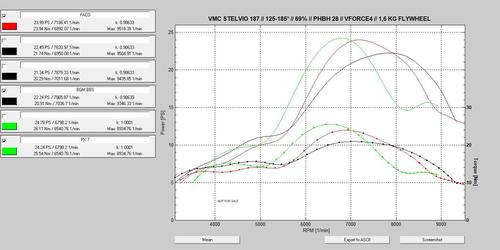



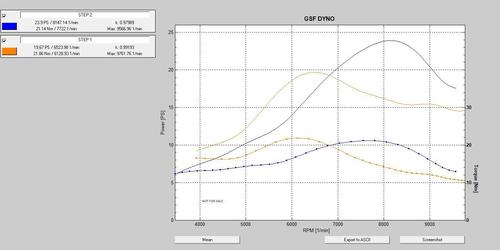
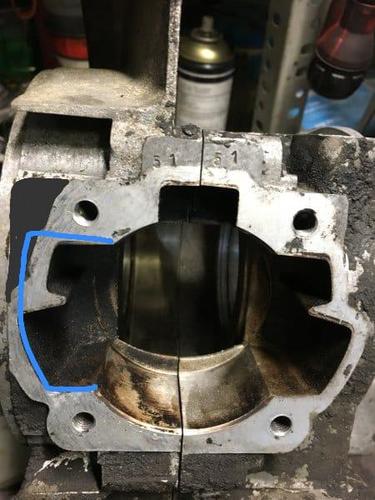
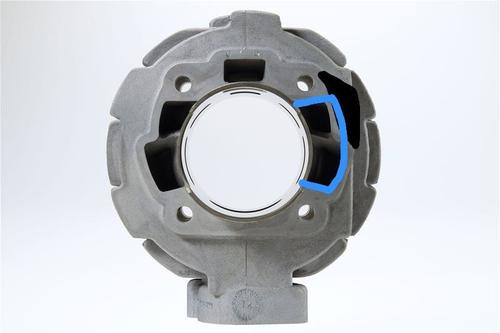

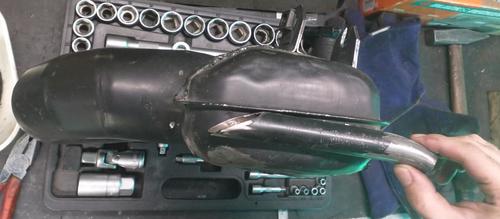
.thumb.JPG.b25b8c73a6ee54262eeea543f34aca77.JPG)

.thumb.jpg.9ffd0c20e8155cfffa090f0f954b88b4.jpg)
.jpg.d70677c09df03cae3d012c5de75fc3ae.jpg)
.jpg.379616622cfca8e7ec8771860a0607a5.jpg)
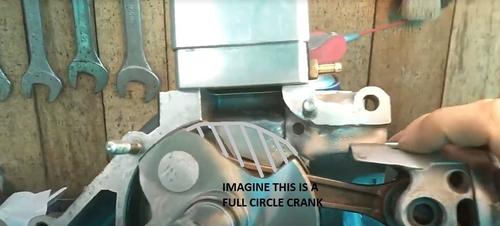
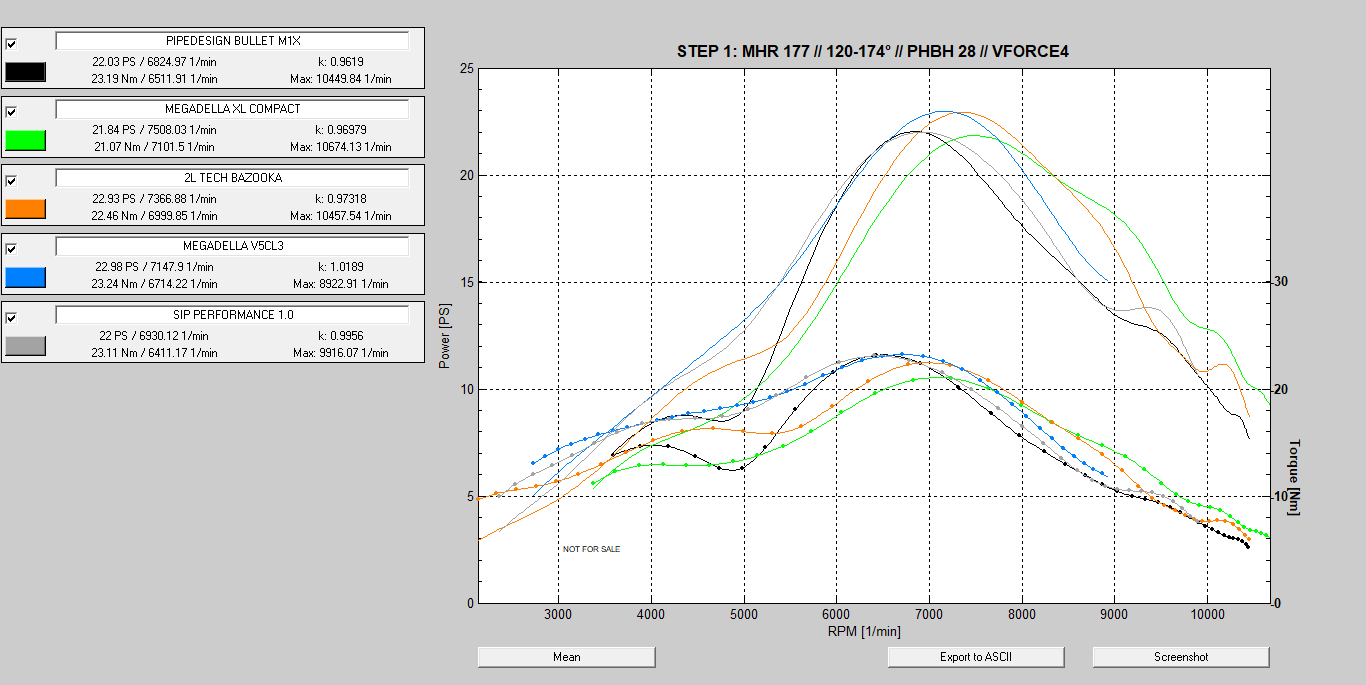
.thumb.JPG.e2de6fde1d839e8035e83b6e01f338e1.JPG)
.thumb.JPG.73c2ae364b1f5580743e29acb2cea125.JPG)
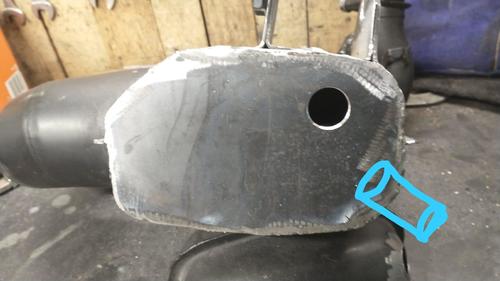
.jpg.62c7348f7dbafcd76ab502c27811a7ce.jpg)